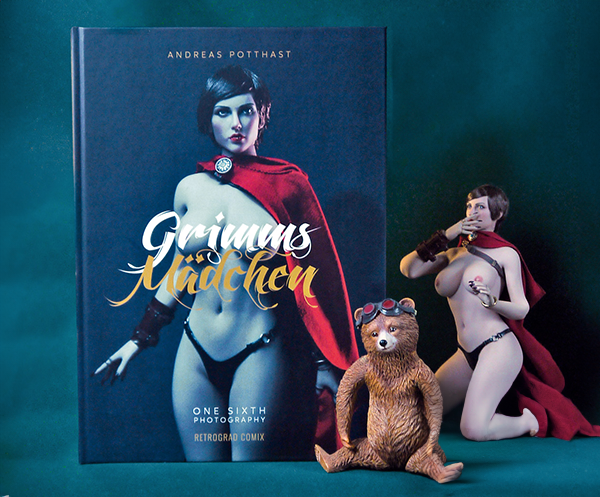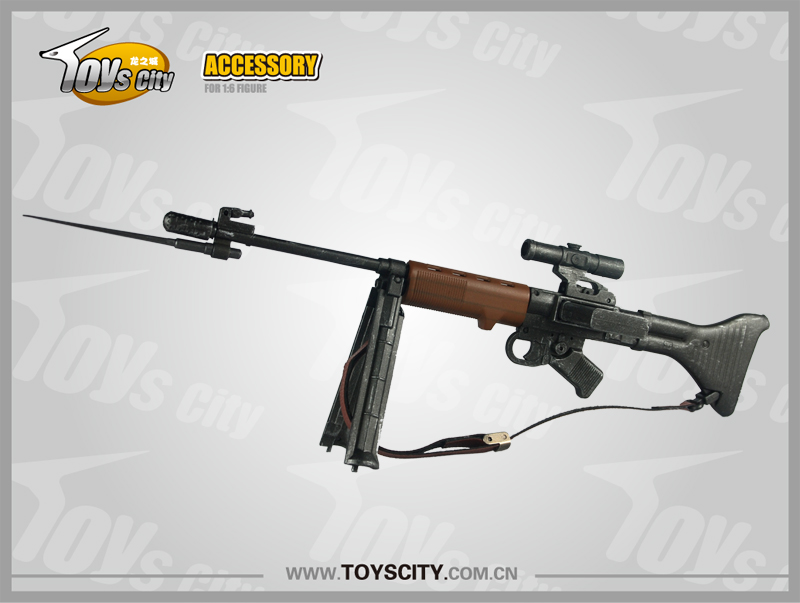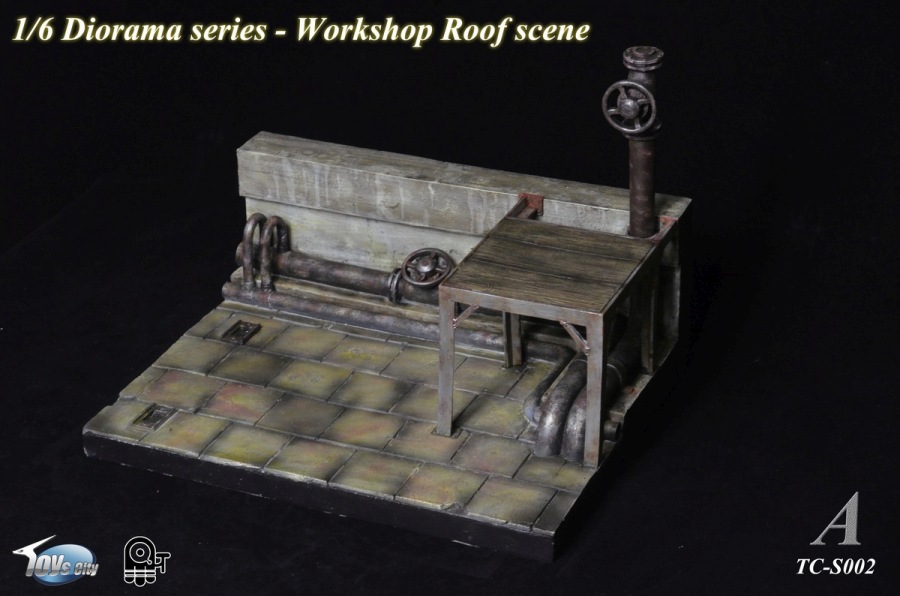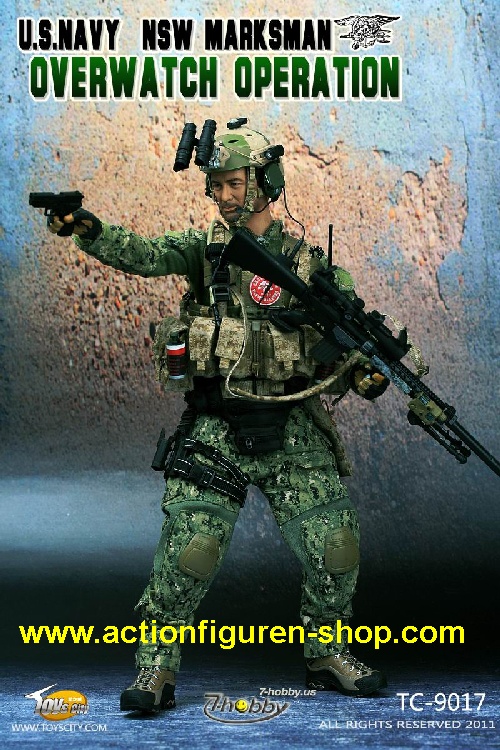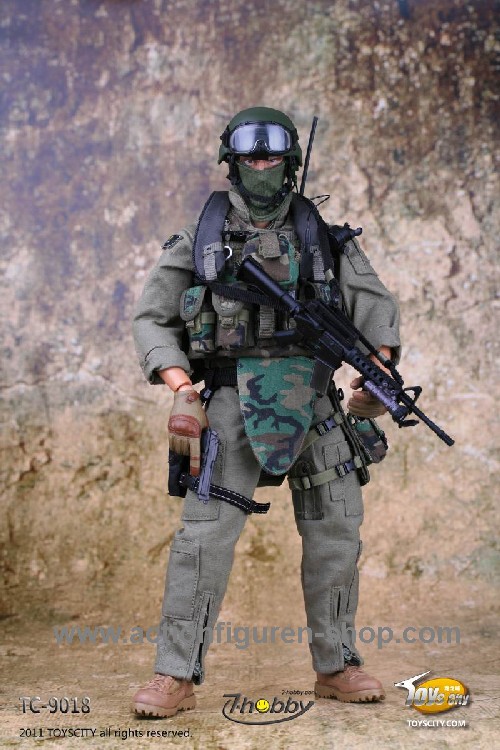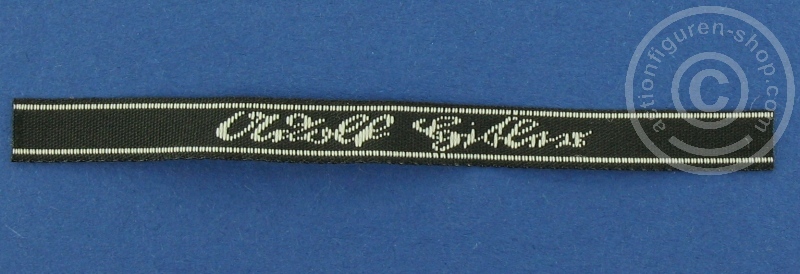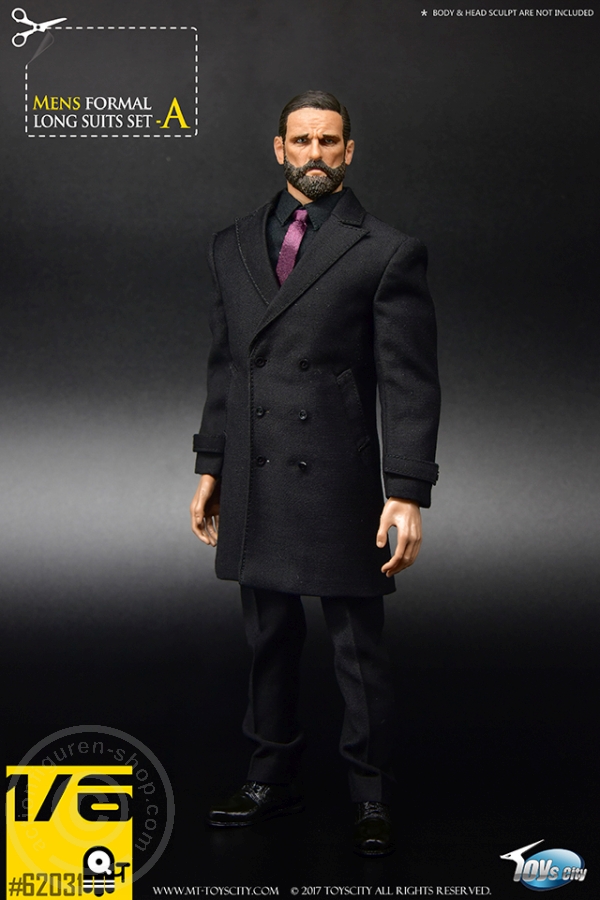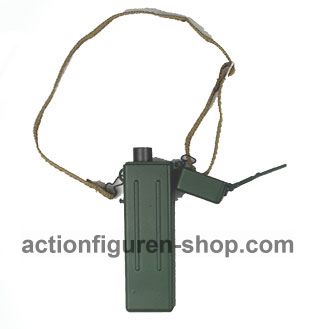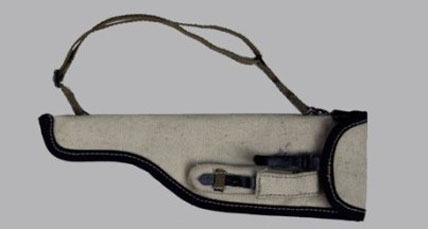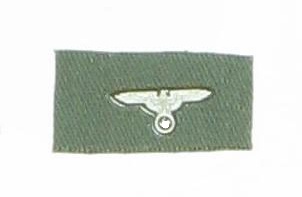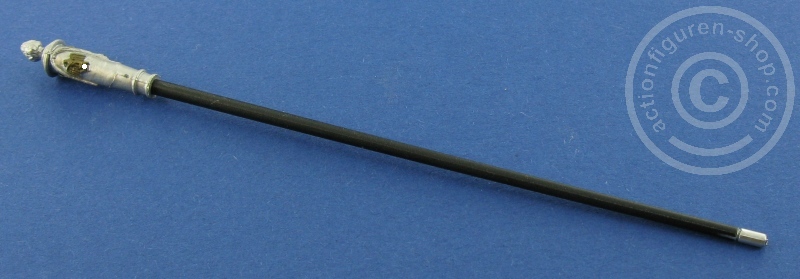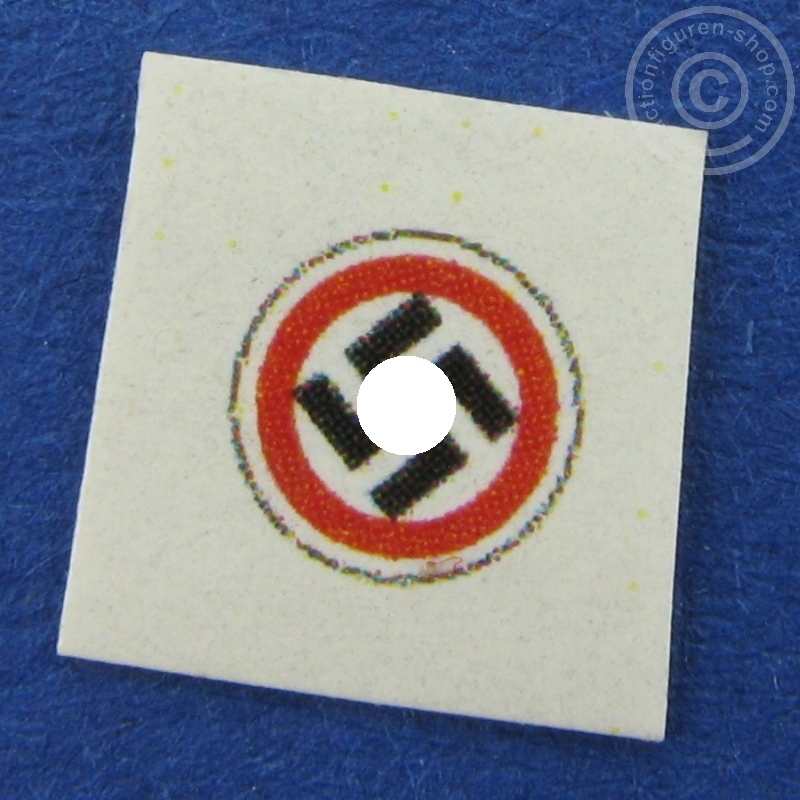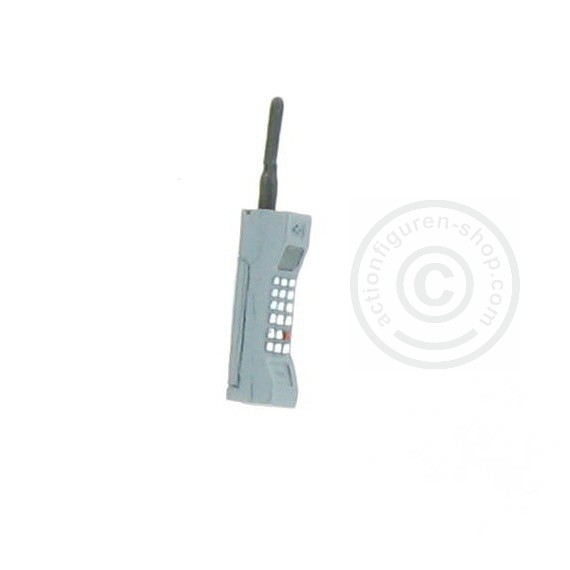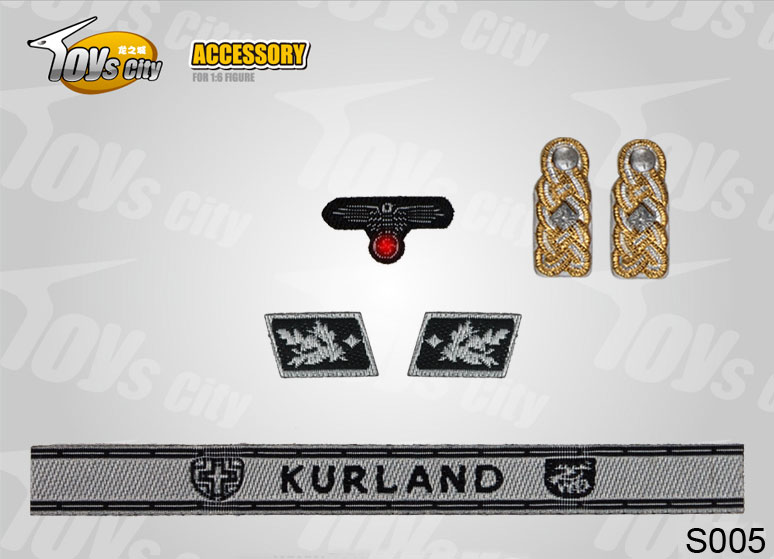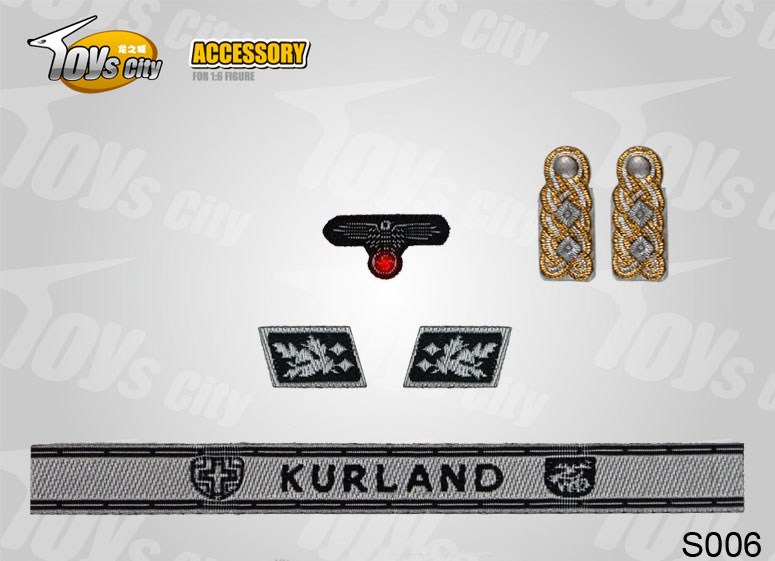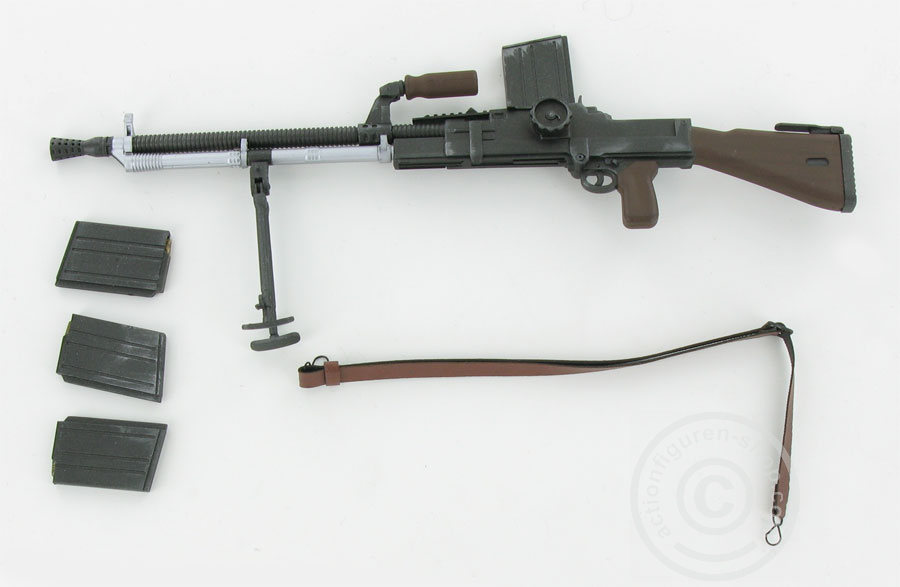
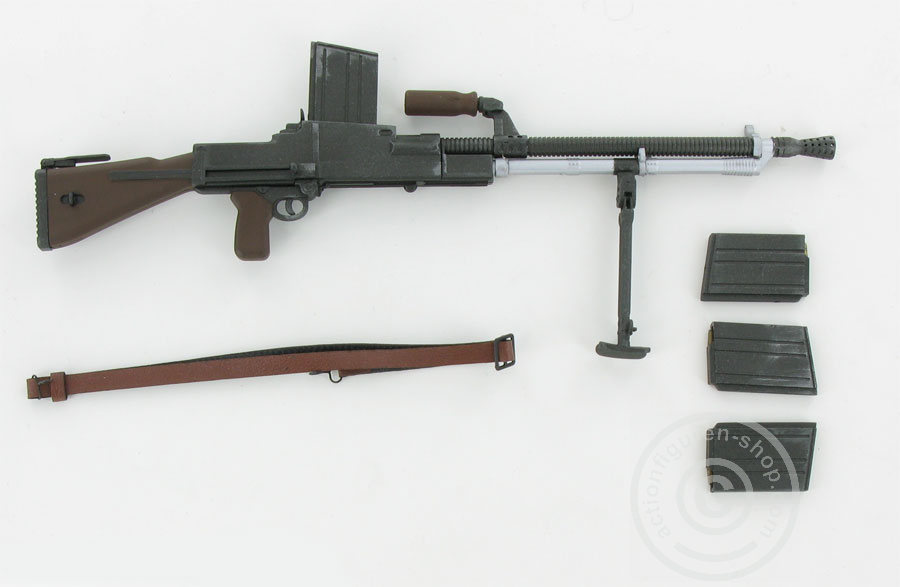






MG26(t) MG mit Zubehör
19,00 €*




mit 4 wechselbaren Magazinen, beweglichem Schloßkasten und Tragegriff, abnehmbare Zwei-bein-Stütze und Ledertrageriemen
Das vz. 26 war das Standard-lMG der tschechoslowakischen Armee in den 1930er-Jahren. Es wurde von Václav Holek 1924 entwickelt und von Zbrojovka Brno (ZB) in Brünn unter der Bezeichnung ZB 26 gefertigt. Die offizielle Bezeichnung der tschechoslowakischen Armee lautete Lehký kulomet vz. 26, was leichtes MG Modell 1926 bedeutet.Das vz. 26 ist ein luftgekühlter Gasdrucklader mit Kippblockverschluß. Der Gaskanal liegt unter dem mit Kühlrippen versehenen Lauf, die Schließfeder befindet sich im Kolben. Es konnte Einzel- oder Dauerfeuer geschossen werden. Der Lauf musste nach 200 Schuss Dauerfeuer gewechselt werden. Von der Infanterie wurde es auf einem Teleskop-Zweibein eingesetzt, gegen Flugzeuge auf einem Dreibein oder in Befestigungsanlagen bzw. in gepanzerten Fahrzeugen auf einer universalen Lafette. Die praktische Kadenz betrug 180 Schuss/min, bei Feuerstößen 100 Schuss/min. Eingeführt wurde das tschechische MG 26(t) ausschließlich für die SS und in den ersten Kriegsjahren produziert. Die Waffe war 1.165 mm lang, der Lauf 600 mm. Sie wog 9,6 kg und erreichte mit einer v0 von 760 m/Sek. eine Schußfolge von 520 Schuß/Min. Die verbesserte Version, das MG 30(t), war 1.200 mm lang. Die Waffe wurde aus tschechischen Beständen übernommen, fiel aber auch als Beutewaffe in Jugoslawien an.(c) Wikipedia
0 von 0 Bewertungen
Anmelden
Weitere Produkte von Toys City ansehen

